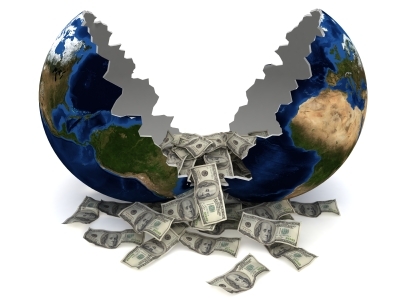So what happened in Japan, and could the same happen here?
“What Japan had is called a perfect storm,” says Andre Filiatrault, director of MCEER (a national center at the University of Buffalo in New York dedicated to helping equip communities to become more disaster resilient in the face of earthquakes and other extreme events) and professor of engineering at University of Buffalo.
The professor agrees Japan has been a leader in establishing quake-resistant building codes. He says some of its buildings have absorbers that act like shock absorbers in cars, and instead of anchoring buildings to the foundation they are placed on rubber pads, both of which help save buildings and lives.

“The devastation from the earthquake alone would have been relatively small. If the country didn’t have the tsunami it would have been a success story. There was just a small amount of casualties due to the earthquake,” he says.
“The problem in this case was multiple extreme events cascading one after another. The tsunami came without warning. People had no time to get to safety. The country has seawalls but the tsunami went over the walls. There was tremendous devastation, but what can you do when you have cascading extreme events like this,” Filiatrault, says.
He says MCEER is working on multiple hazards and what can be done to limit the losses if they should occur. In the meantime, he says what happened in Japan should be a wake-up call to people everywhere, especially those in the U.S.
“The Cascadia Ridge is similar to Japan. It has the potential to create a large earthquake,” Filiatrault says.
Filiatrault says our building codes are up to date and our engineers are very knowledgeable about building for earthquakes. The problem, he says, is in implementation of those codes.
He says there is still a large amount of existing buildings not designed to seismic standards and a lot of people in earthquake-prone areas are not prepared should one occur.

“Go to St. Louis or Memphis (both by the New Madrid Fault). How many people there are prepared for earthquakes? A very small number,” he says.
According to the Insurance Information Institute, some 90 percent of the country’s population lives in seismically active areas. Statistics, it says, show that since 1900 earthquakes have occurred in 39 states and caused damage in all 50 states. More than 3,300 Americans have died in earthquakes in the last century.
Dr. Robert Hartwig, an economist and president of III, says the U.S. is making strides in being more prepared in the event of a tsunami.
“The U.S. has expanded significantly its ability to detect, and respond, to tsunamis since December 2004, when a devastating earthquake caused a tsunami in Indonesia, which killed more than a quarter million people, causing $10 billion in damage, $1 billion of that insured,” Hartwig says.
He says the National Oceanic and Atmospheric Administration increased to 39 from six the number of tsunami detection stations it has installed as part of its worldwide Tsunami Warning System. There are now 83 communities in 10 states and U.S. territories recognized through the National Weather Service’s Tsunami Ready program.
“What happened in Japan should be a warning. We need to take earthquakes very seriously,” Filiatrault says.












